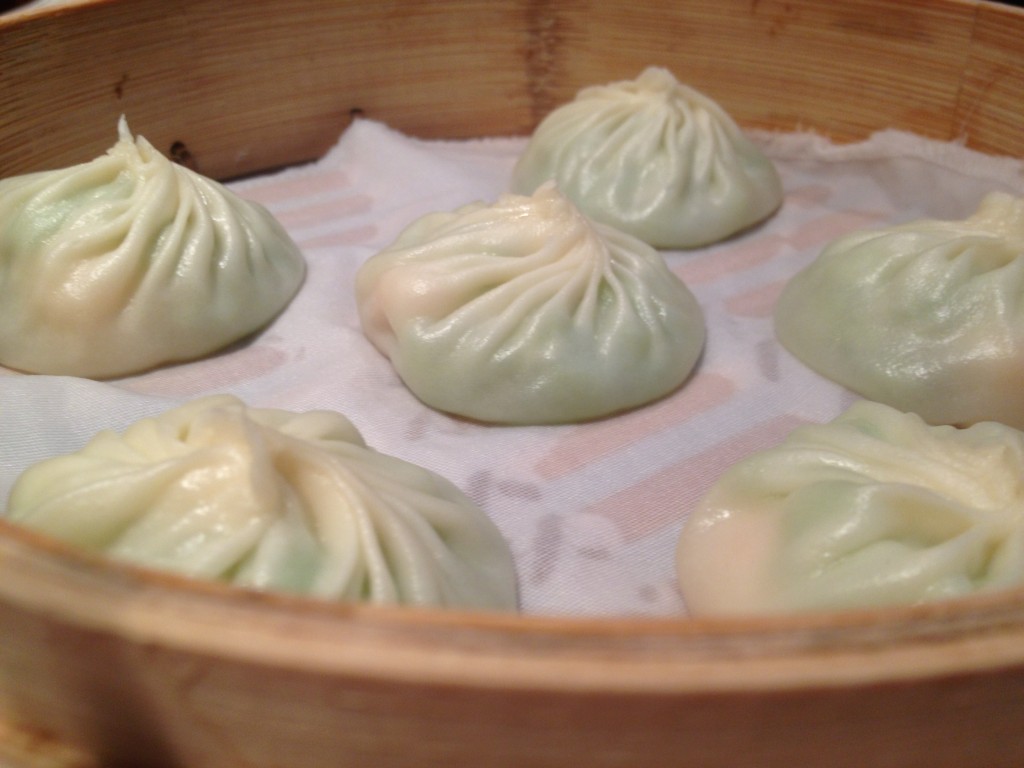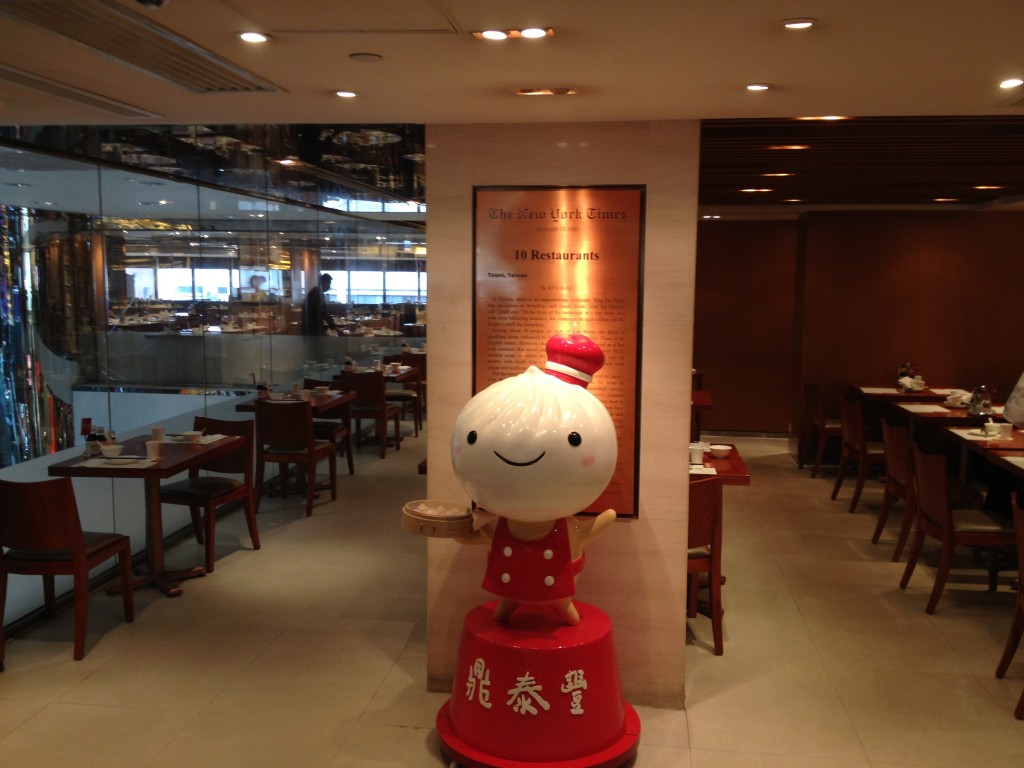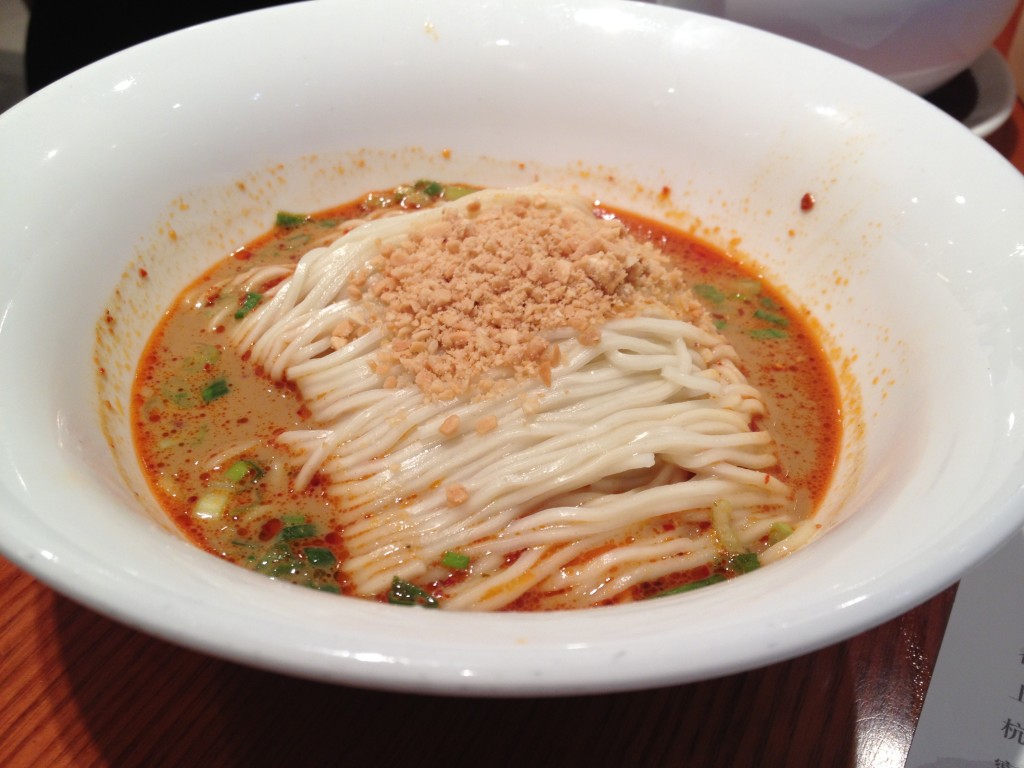Smart Asia Getaways
Discover Asia, the smart way
Din Tai Fung – The Best Restaurants in Asia
The most famous Taiwanese restaurant in the world came into being because its founder, a Chinese man named Yang Bingyi, couldn’t sell cooking oil.
Let’s back up. Let’s talk about soup dumplings.
Xiaolongbao (“shau long bow”), literally “small bamboo-steamed bun”, owes its origin to an unknown inventor in Nanxiang – a suburb of Shanghai – who sold the little buns at a food stand adjoining a park. It’s difficult to get a fix on the exact moment residents of Nanxiang “crossed over” from xiaolongbao-less antiquity to xiaolongbao-abundant modernity, but the founding date of one of its original sellers is circa 1900.
Still with me? Here’s a photo of a xiaolongbao so we’re on the same page… They differ from traditional dumplings because chefs insert a frozen cube of soup broth before steaming. During the cooking process, the cube melts, and the broth mixes with the savory juices of the meat as it cooks. The result is a squishy, rubbery, soupy orb of deliciousness.
 Anyway, someone in Nanxiang invents the things, then Yang Bingyi adapts the recipe after immigrating to Taiwan in 1948 – one of an entire generation of Chinese displaced by the civil war.
Anyway, someone in Nanxiang invents the things, then Yang Bingyi adapts the recipe after immigrating to Taiwan in 1948 – one of an entire generation of Chinese displaced by the civil war.
“So then he moves to Taipei, founds Din Tai Fung, makes it big, and the rest is history, right?”
Haha. Not so fast.
In 1958, a full ten years later, Yang opened a cooking oil retail store.
“But then he quickly realized dumplings were the better bet?”
Nope.
Twenty two years later, in 1980, when the cooking oil business was in dire straits, Yang and his wife began to sell xiaolongbao on the side, and only then did Din Tai Fung spring, reluctantly, into existence.
Put another way, had the good chefs of Taipei not discovered tinned cooking oil in the late ’70s, the world’s most famous xiaolongbao restaurant might never have been founded.
Put another way, had the good chefs of Taipei not discovered tinned cooking oil in the late ’70s, the world’s most famous xiaolongbao restaurant might never have been founded.
Why should you care? Because fast forward again, this time to the ’90s, and Di Tai Fung quietly begins to take over. The international acclaim that Yang Bingyi resisted with all his might began to arrive in 1993, when the New York Times named Din Tai Fung one of the top restaurants in the world. In 2009 and 2010, respectively, two locations, both in Hong Kong – oh yea, I forgot to mention that after the initial success Din began to syndicate – were awarded one Michelin star. To bring things full circle, Chih-Yu and I are reviewing two locations on this trip. The first (well, chronologically the second) is the original location at Xiniyi Road in Taipei. (We’ll update this article to include that review early next week.) The second, where we ate yesterday – for a mere $58 US all-in, lest you think we’re talking about high-rolling here: we’re not – was the first location to receive the Michelin star, at Jianshazui in Hong Kong.
Silvercord Branch, Jianshazui (尖沙咀), Hong Kong
We’ll save you any suspense about what Silvercord is. It’s a shopping mall. Din Tai Fung Silvercord perches regally on the center’s top floor, occupying two-thirds of the floor space in a glassed-in, wraparound design. At the entrance sits the chain’s immediately recognizable icon, the dumpling man (Mr. Dumpling?) and behind him, a plaque with the original Times article that put him on the map.
The service, like the decor, is polite, unobtrusive, and efficient, and aims for no-frills precision instead of ostentation. At the opening hour, the staff lines up, and intones, “ni hao, limian qing” – “hello, please come in” – in military unison.
You order as you would dim sum – by marking a number next to the dishes you want indicating the quantity.
To begin, we had to order two varieties of the dish that made Din Tai Fung famous – xiaolongbao – and we opted for two on the exotic side (departing from the standard minced pork): shrimp and pork together, and shrimp with squash.
In his book Fresh Off The Boat, Eddie Huang describes how Din elevated the soup dumpling to an art form. Every bun has precisely sixteen folds at the top. Like sushi, xiaolongbao requires and rewards the type of surgeon’s touch that comes from years of careful practice. And I’ll say this out front: Don’t go to Din until you’ve tried decent xiaolongbao from other spots. You’ll appreciate more what makes Din world-class, and you won’t ruin every other xiaolongbao restaurant in the world out of the gate.
The texture of the dough is paramount. Agile enough to hold its integrity and contain the soup, but thin-as-hell, responding to the slightest poke with a chopstick by giving-way, and shedding its contents onto (hopefully) your spoon, and maybe (if you’re not so lucky) your shirt. Translucent, allowing different interior ingredients to “shade” it slightly, so that, for instance, squash-filled bao take on a subtle green hue.
As depicted, I took Eddie Huang’s advice to avoid hooliganism, and let my bao chill in my saucer of one part soy sauce, three parts vinegar, until cool enough to eat.
In case you missed Fresh Off The Boat, Din is helpful enough to hand you an illustrated guide to eating xiaolongbao.
We also sampled dan dan mian noodles in penut sauce, drunken chicken – marinated in rice wine, steamed with skin-on, then blanched, black fungus with vinegar and rice wine, and Shanghai-style dumplings.
Taiwanese cooking, at its best, often borrows recipes from across the strait and refines them. Taiwanese versions of traditional Chinese dishes tend to emphasize subtlety over impact. True-to-form, Din’s dishes don’t overwhelm you with flavor, but rather seduce you with depth, complexity and texture.
Fittingly, China and Hong Kong have embraced Din right back, flocking to no fewer than sixteen locations on the mainland, with six in Shanghai – birthplace, you’ll remember of xiaolongbao – alone.
In the next continuation of this article, we’ll review the original location, at Xinyi Road in the Da An neighborhood of Taipei, where Yang Bingyi’s original cooking oil store once stood.



Yay! Great writing, mouth-watering photos! I can almost taste the dishes you so artfully describe!
Pingback: Where to Eat in Kaohsiung - 8 Great Spots | Smart Asia Getaways
Pingback: Three Hong Kong Restaurants Worth Your Plane Ticket | Smart Asia Getaways